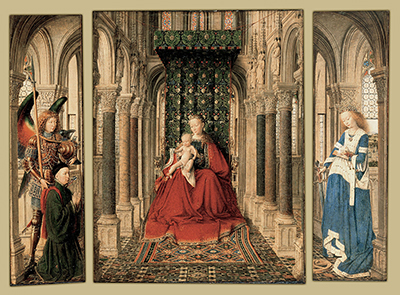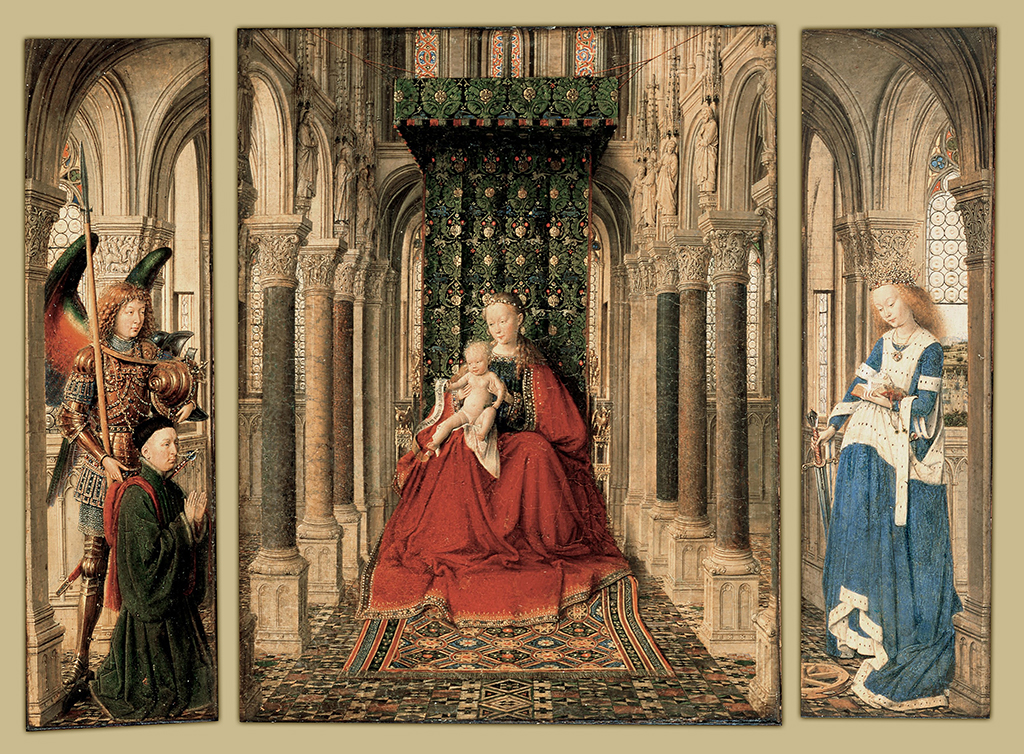The Dresden Triptych is a delightful hinged series of panels produced by Jan van Eyck which features five different artworks together. The work was completed in 1437 and it is part of a collection in the German city of Dresden, hence its nickname.
The fuller original title of this piece is likely to have been either Virgin and Child with St. Michael and St. Catherine and a Donor, or Triptych of the Virgin and Child. Over time this has been replaced to a certain degree with the reference to its location and this was a common way of identifying works by the masters, where they may have resided in the same collection for several centuries. It is now specifically to be found at the Gemäldegalerie Alte Meister, Dresden and ranks as one of the highlights of their display, due to the qualities of the artwork itself as well as the global reputation enjoyed by this particular artist. Triptychs were frequent during this period, particularly in Northern Europe, and many have been preserved up to the present day for us to continue to appreciate. Hieronymus Bosch would also produce a number of these, some of which are today displayed together in the Spanish city of Madrid, at the Prado Museum - see The Garden of Earthly Delights, Haywain Triptych and The Last Judgement for examples of them.
Any triptych will normally feature double sided wings which hold artworks on both sides and are then connected to the central panel through simple hinges. This then allows one to open and close the piece as we wish in order to see the work on both sides of the wings. The artwork in the central panel would normally be the most significant, with the side pieces supporting this main theme. From the works that have successfully been attributed to this artist, the Dresden Triptch came in around the middle period of these. He also signed the piece with his common motto of "I Do as I Can" though normally he only left this besides his commissioned portraits, and not his religiously themed pieces. We do see some elements here that were to continue into the latter part of his career, such as changes in the use of perspective. As with many of his artworks, the detail included here is extraordinary, and something that you will notice consciously until after having studied the piece several times.
The Virgin Mary and Archangel Gabriel are captured in an Annunciation setting on the outer wings, which are only visible once the hinged panels are closed. Inside, we see Mary seated with Christ perched upon her within the central panel. She is covered in the same red cloth which appears elsewhere in a number of his other paintings. A heavily detailed series of pillars work their way from either side of these figures towards us, though they are placed closer to each other than the perspective would normally expect. Van Eyck was still perfecting his use of perspective at this time and clearly retained some of the stylistic methods used previously in the Gothic art era.
A trip to the Gemäldegalerie Alte Meister in Dresden, Germany will also give you the opportunity to see some other fine artworks, some of which are related to the style and period of van Eyck. For example, some of the highlights within this impressive collection include the likes of Sistine Madonna by Raphael, Correggio's Madonna and Child with St Francis, The Tribute Money by Titian, Rembrandt van Rijn's The Prodigal Son in the Tavern and also Vermeer's The Procuress. They serve the old masters particularly well and for followers of that artistic period, there are few institutions that can match the display found here.





